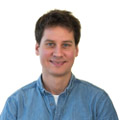If the project areas are too large for terrestrial surveying, inaccessible or too uneconomical to fly over by plane or helicopter, then we carry out the survey by drone.
Typical area sizes for the efficient use of drones range from a few hectares to several square kilometers. From an area size of approx. 5 km² we use our airplanes or, if necessary, helicopters for data acquisition.
Drones and sensors
Choosing the right sensor is the key to creating highly accurate survey data. We have several drones and sensors at our disposal. Depending on the requirements, aerial images, laser scanning, thermal scans or hyperspectral images are recorded.
Experience and expertise
The best sensors do not necessarily deliver the best results. This is where our experience and the expertise of our employees come into play: we have been active in photogrammetry (analysis of aerial images) for over 20 years and in the Laserscanning active. We employ around 30 highly qualified employees in this field. Eight trained drone pilots are available for the flights at our AVT locations in Austria, Germany and Italy.
Aerial photos (vertical and oblique)
Aerial images are a basic product of data acquisition, as a wide range of data can be derived from them. We record and analyze both vertical and oblique aerial images in different resolutions.
Thermal images
Thermal aerial images provide information about the surface temperature of objects. They are used, for example, to detect damage to photovoltaic systems and district heating networks or to record waste heat from buildings.
Hyperspectral scans
Hyperspectral scans have enormous potential for analyzing surfaces, as they record not just three but up to 224 bands compared to classic RGB aerial images. We use AI-based classification to create thematic maps from the data.
True-Orthophotos
A true orthophoto is a distortion-free image that is created from many individual aerial images. The main difference between a true orthophoto and a conventional orthophoto is that there is no tilting of the building. This ensures optimum ground visibility as there are no dead spaces. It is a special product for documentation and planning purposes.
Point clouds
Point clouds consist of a large number of points (3D coordinates) that geometrically represent the measured object. The point densities typically range from several hundred to several thousand point measurements per square meter. We calculate photogrammetric point clouds from aerial photographs as well as point clouds from laser scanning.
Meshes
Meshes, also known as triangular meshes, are widely used in the visualization of individual existing buildings through to complete cities. By taking oblique aerial images (around 45°) in addition to the vertical aerial images, house facades are captured very well. The result is a digital twin of the property in 3D.
Terrain / surface models
Terrain models represent the structure of the natural terrain without vegetation and without man-made artifacts (e.g. houses and bridges). They serve as a basis for planning or as input for topographical changes (e.g. changes in the cubature of quarries). When it comes to creating terrain models, we generally recommend the use of drones with laser scanners. Compared to terrain models, surface models also include vegetation and man-made art objects.
Inventory evaluations
As a rule, we carry out inventory evaluations in 3D. They are carried out either in a point cloud or photogrammetrically. As one of very few surveying offices in Austria, we have several photogrammetric 3D evaluation stations. Objects that cannot be surveyed by drone are supplemented by terrestrial measurements.
Evaluation of aerial images with measuree
measuree is a browser-based application with which 3D measurements can be carried out directly in aerial images. Its functions and intuitive user interface make it the ideal tool for surveyors and other users. Various formats are available for data output, including AutoCAD files and shapefiles.
We will be happy to make you an offer for the use of the software.
your contact person
Erik Bollmann, Ph. D
+43 50 6930-150























